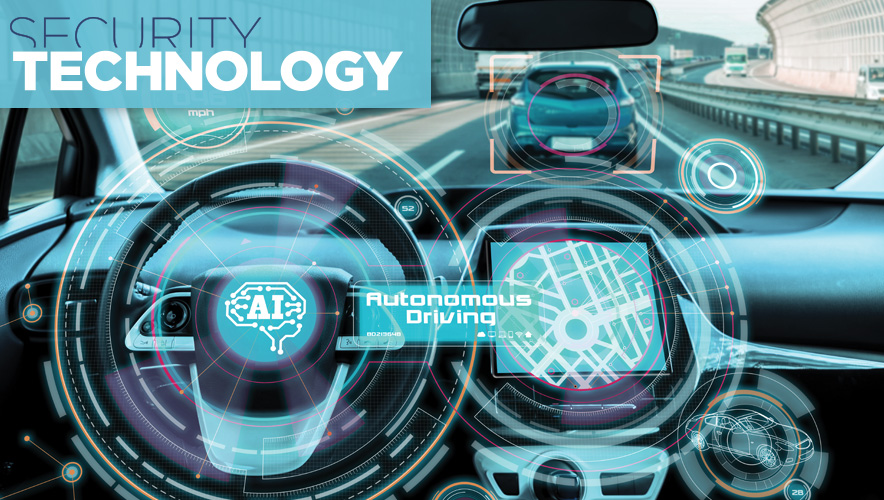Risks of the New Ride
To some, driverless cars are the stuff of nightmares and horror movies. Just the idea of riding in a fast and potentially destructive machine with no agency over speed and direction can feel disturbing on a primal level, like a living metaphor for being completely out of control.
It’s not surprising, then, that 42 percent of respondents in a recent survey said that they would refuse to ride in a self-driving vehicle (SDV). The survey also went a bit further: What if the driverless car had a stellar safety record? Nonetheless, 38 percent of respondents said they would not ride in one, regardless of its safety rating.
Conducted by J.D. Power, the results of the survey of 1,000 U.S. respondents was released in early October at the Auto Summit, an event held by the University of Michigan Transportation Research Institute. It also found that a slightly larger group of respondents, 45 percent, would ride in an SDV if it were 100 percent safe, with a zero error rate.
But even if a 100 percent safety rate were achievable, finding an institution that most people would trust to issue a safety rating could be a problem, the survey found. Only 12 percent of respondents said they would trust the manufacturers to test SDVs for safety, and just 9 percent said they would trust the government. The Insurance Institute for Highway Safety gained the trust of 29 percent of respondents, making it the most trusted testing body. But the highest number of respondents, 40 percent, said there was no organization they would trust to conduct safety testing on SDVs.
And these types of concerns about SDVs are not merely an American phenomenon, but they are prevalent in countries around the world, experts say. For example, in China, researchers Peng Liu and Run Yang of Tianjin University, and Zhigang Xu of Chang’an University, realizing that safety remains a big issue with SDVs, decided to examine the following questions: When it comes to SDVs, how safe is safe enough? What is the socially acceptable risk level?
The study found that respondents believe SDVs should be four to five times as safe as conventional cars. So, using the current global traffic fatality risk of an estimated at 17.4 fatalities per 100,000 drivers, the acceptable global fatality risk of SDVs would be about three to five fatalities per 100,000, according to the study’s findings, which were published earlier this year in the journal Risk Analysis.
This four-to-five-times safer standard surprised Liu, who is an assistant professor in the department of industrial engineering at Tianjin University. “Certain regulators suggest that if SDVs are twice as safe as the average human driver, we should consider allowing them to operate on public roads,” he told Security Technology in a recent interview. “And it is definitely great technical progress if the safety of SDVs reaches this level. However, our finding suggests that this level of safety may be not enough for most people to give up their control of vehicles and entrust their lives to SDVs.”
Moreover, it seems entirely possible that this highly desired safety standard is not widely understood in the government and industry communities, he adds. “Policy makers, regulators, and the transportation industry seem to not pay sufficient attention to the need and voice of the public in terms of the safety of SDVs,” Liu says. “An effective public discourse among many stakeholders is necessary to arrive at a consensus about the acceptable safety of SDVs.”
To contribute to this discourse, the researchers proposed risk level requirements for SDVs that divide risks by three categories: unacceptable, tolerable, and broadly acceptable.
Under this proposal, SDVs that are less safe than conventional cars would be in the unacceptable risk category. In the tolerable risk category are SDVs that are four to five times as safe as human drivers. The broadly acceptable risk category would be set as two orders of magnitude lower than current global traffic risk, or about 0.17 fatalities per 100,000. That broadly acceptable risk level is somewhat similar to the risk level of public transportation modes such as rail and commercial aviation.
But concerns about safety levels aside, the U.S. government is rolling forward with its own proposals for encouraging the development of SDVs. In October, the U.S. Department of Transportation (DOT) released Automated Vehicles 3.0: Preparing for the Future of Transportation, a strategic plan and set of guiding principles for a policy framework that will encourage the development of SDVs.
The new plan sets out six guiding policy principles from DOT moving forward: prioritizing safety; remaining technology-neutral, so the public can choose the best technologies instead of what government dictates; modernizing or eliminating regulations that impede the development of SDVs; encouraging a consistent regulatory environment free of state-by-state conflicts; preparing proactively for automation with pilot programs and best practice guidance; and protecting the rights of citizens to choose conventional cars instead of SDVs.
The plan also acknowledges current safety and security concerns, and DOT pledges to prod the private sector to develop solutions to secure SDVs from hacking and other threats.
“The public has legitimate concerns about the safety, security, and privacy of automated technology,” U.S. Transportation Secretary Elaine Chao said in the plan’s introduction. “So, I have challenged Silicon Valley and other innovators to step up and help address these concerns.”
